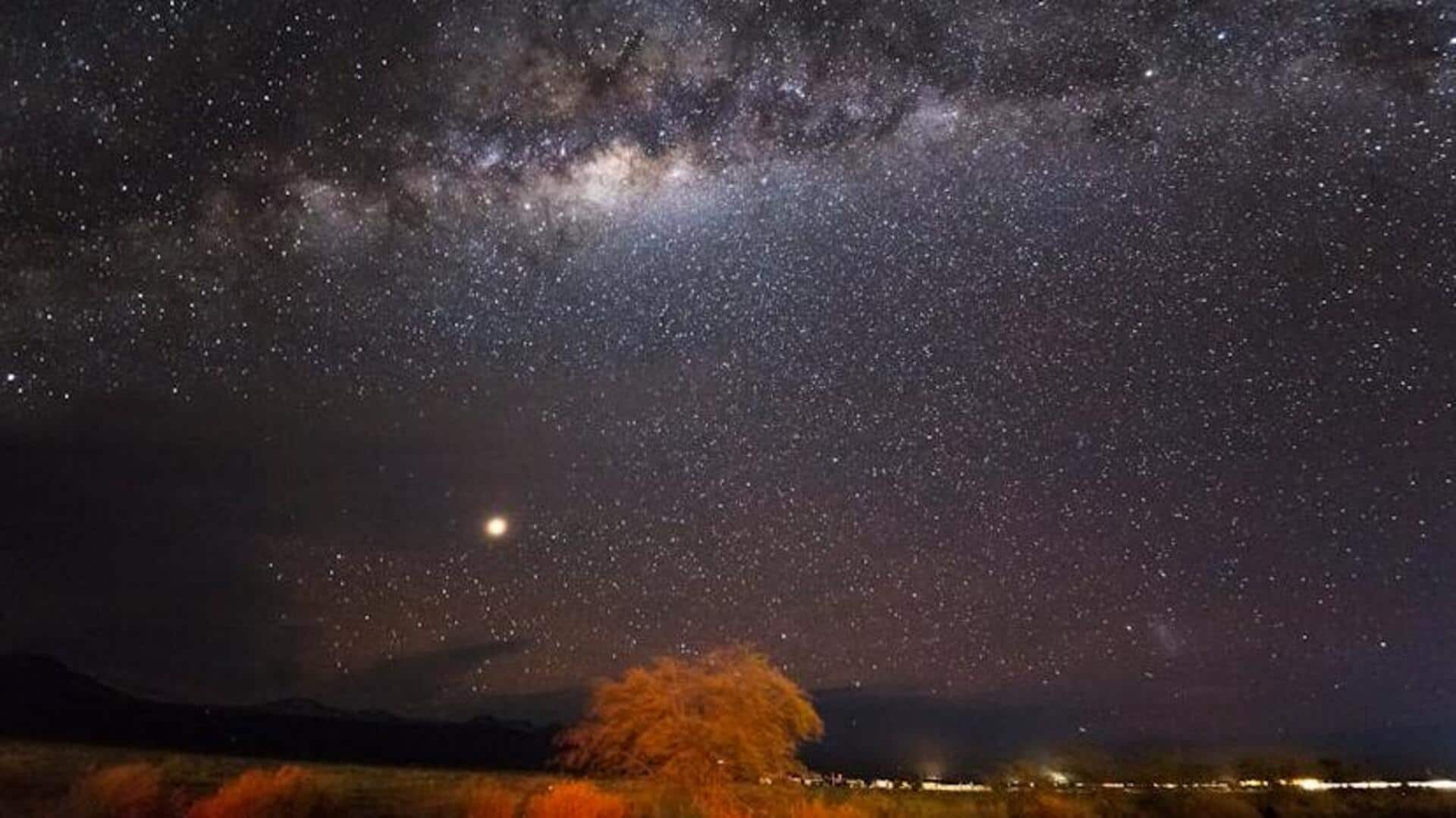
Unveiling the night sky in Atacama Desert, Chile
What's the story
The Atacama Desert in Chile offers one of the clearest night skies on Earth.
This vast, arid region is a sanctuary for astronomers and stargazers alike.
Its high altitude, dry air, and minimal light pollution create perfect conditions for observing the cosmos.
Visitors come from around the world to witness the unparalleled beauty of the stars and galaxies above.
Getting there
Plan your stargazing adventure
To reach the Atacama Desert, an adventure begins at the nearest major airport in Calama.
From there, you have the option to rent a car or board a bus to San Pedro de Atacama, the starting point of your stargazing journey.
This route presents stunning views of desert landscapes and volcanic formations, setting the stage for an unforgettable experience.
Observation points
Choose your stargazing spot
San Pedro de Atacama serves as a base for exploring various observation points.
The ALMA Observatory, although not always open for public tours, is located nearby and is one of the most advanced astronomical facilities in the world.
For a more hands-on experience, several local observatories offer nightly tours where guides share insights about constellations, planets and deep-sky objects.
Cultural insights
Embrace local culture
While in San Pedro de Atacama, dedicate time to delve into local culture. A visit to the R.P. Gustavo Le Paige Archaeological Museum is a must.
Here, you can learn about the region's indigenous history and view artifacts that span thousands of years.
This exploration will deepen your understanding of how ancient civilizations connected with the stars.
Preservation tips
Respect nature's silence
Stargazing in the Atacama requires mindfulness to preserve its natural beauty and tranquility.
Utilize red-light flashlights to safeguard your night vision without disturbing others.
It's crucial to stay on designated paths and comply with local guidelines.
These actions ensure this celestial theater remains untouched for future generations, allowing everyone to enjoy the wonders of one of Earth's most extraordinary natural observatories.